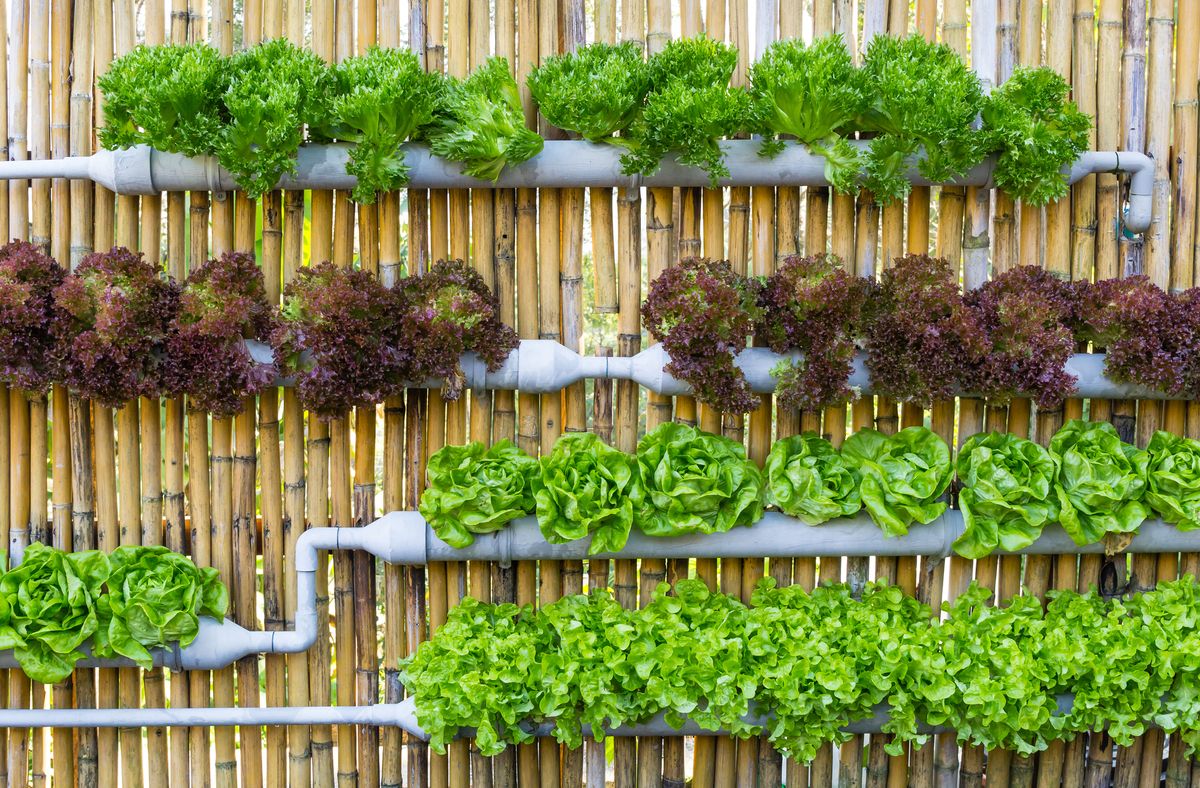

Articles
What Is A Hydroponic Garden
Modified: October 20, 2024
Discover the benefits of hydroponic gardening and how it can revolutionize your gardening experience. Start growing your own plants indoors with a hydroponic garden.
(Many of the links in this article redirect to a specific reviewed product. Your purchase of these products through affiliate links helps to generate commission for Storables.com, at no extra cost. Learn more)
Introduction to Hydroponic Gardening
Hydroponic gardening is a modern and innovative approach to cultivating plants without the use of soil. Instead, plants are grown in nutrient-rich water solutions that provide all the essential elements needed for their growth and development. This method allows for greater control over environmental factors and provides optimal conditions for plants to thrive.
Hydroponic gardening offers numerous advantages over traditional soil-based gardening. One of the primary benefits is water efficiency. In a traditional garden, a significant amount of water is lost through evaporation, runoff, and absorption into the soil beyond the reach of plant roots. However, in hydroponic systems, water is recirculated, minimizing water waste and making it an environmentally friendly option.
Another advantage of hydroponic gardening is the ability to grow plants in any location, regardless of soil quality. This opens up opportunities for urban farming, rooftop gardens, and indoor gardening. Hydroponic systems can be set up in small spaces, allowing for year-round cultivation of fresh produce.
One of the key aspects of hydroponic gardening is the precise control over nutrient levels. By providing the plants with an optimized nutrient solution, growers can ensure that plants receive the ideal balance of essential minerals and vitamins. This allows for faster growth and higher crop yields compared to traditional gardening methods.
There are various types of hydroponic systems available, ranging from simple to more complex setups. Some of the most common systems include deep water culture, nutrient film technique, aeroponics, and drip irrigation. Each system has its own set of advantages and considerations, depending on factors such as available space, budget, and personal preferences.
In the next sections of this article, we will explore the different types of hydroponic systems in more detail, discuss the essential components required for a successful hydroponic garden, and provide tips on nutrient management, planting, and maintenance. We will also address common challenges faced by hydroponic gardeners and offer troubleshooting solutions. By the end, you will have a comprehensive understanding of hydroponic gardening and be ready to embark on your own hydroponic gardening journey.
Key Takeaways:
- Hydroponic gardening offers water-efficient, space-saving, and pest-resistant solutions for growing plants, providing faster growth and higher yields compared to traditional gardening methods.
- Choosing the right hydroponic system, managing nutrient solutions, and addressing common challenges are essential for successful hydroponic gardening, offering a sustainable and rewarding journey of exploration and enjoyment.
Benefits of Hydroponic Gardening
Hydroponic gardening offers a range of benefits that make it an attractive option for both novice and experienced gardeners. Let’s explore some of the key advantages of hydroponics:
- Water Efficiency: Hydroponic systems use water much more efficiently compared to traditional soil-based gardening. In hydroponics, water is recirculated, reducing water waste and allowing for up to 90% less water usage compared to traditional gardening methods.
- Year-Round Cultivation: With hydroponics, you can grow plants throughout the year, regardless of the climate or season. By providing optimal conditions for growth, including controlled temperature, humidity, and lighting, you can grow your favorite crops all year long.
- Space Efficiency: Hydroponic systems require less space compared to traditional gardens. This is a huge advantage for urban dwellers or those with limited outdoor space. Vertical hydroponics, in particular, allows for compact and vertical growth, maximizing every inch of available space.
- No Soil Limitations: Hydroponic gardening eliminates the need for quality soil, which can be a significant limitation in traditional gardening. This means you can grow plants in areas with poor soil quality or even on rooftops and balconies that lack soil entirely.
- Pest and Disease Control: By growing plants hydroponically, you can significantly reduce the risk of pests and diseases. Since hydroponic systems are soil-less, they provide fewer hiding places for pests, reducing the likelihood of infestations. Additionally, the controlled environment minimizes the risk of diseases spreading through the soil.
- Faster Growth and High Yields: With precise control over nutrient delivery, light exposure, and environmental factors, hydroponic plants tend to grow faster and produce higher yields compared to traditional gardening. Plants in hydroponic systems receive optimal nutrition, eliminating nutrient deficiencies or imbalances that can hinder growth.
- Reduced Weed Growth: Weeds can be a constant battle in traditional gardens, competing for nutrients and space with desirable plants. However, in hydroponics, the absence of soil makes it difficult for weeds to take root and thrive, minimizing the need for weed control.
- Controlled Nutrient Levels: Hydroponics allows for precise control over nutrient levels, ensuring that plants receive the ideal balance of essential elements. This can lead to healthier plants, better flavor, and improved nutritional value in the harvested produce.
These are just a few of the many benefits that hydroponic gardening offers. Whether you’re a seasoned gardener looking to explore new techniques or a beginner looking for a more efficient and convenient way to grow your own food, hydroponic gardening is a fantastic option to consider.
Different Types of Hydroponic Systems
Hydroponic gardening encompasses various types of systems, each with its own unique characteristics and advantages. Let’s take a closer look at some of the most popular types of hydroponic systems:
- Deep Water Culture (DWC): In this system, plants float directly on a nutrient-rich water solution with their roots submerged. An air pump provides oxygen to the roots, ensuring they receive adequate oxygenation. DWC is simple to set up and suitable for growing small to medium-sized plants like lettuce, herbs, and leafy greens.
- Nutrient Film Technique (NFT): NFT systems involve a shallow, sloping channel where a thin film of nutrient solution flows continuously. The plant roots are suspended in the channel, allowing them to draw the necessary nutrients. The film of nutrient solution recirculates, providing a continuous supply to the plants. NFT is ideal for growing lightweight and shallow-rooted crops like basil, strawberries, and spinach.
- Aeroponics: Aeroponic systems use a high-pressure mist or fog to deliver nutrients directly to the plant roots. The roots are suspended in the air, allowing for maximum uptake of moisture and nutrients. Aeroponics promotes rapid growth and can facilitate higher yields. This system is suitable for growing various plants, including fruits, vegetables, and herbs.
- Drip Irrigation: Drip systems involve the slow and precise delivery of nutrient solution to the plant roots. A timer-controlled pump delivers the solution through a network of tubing and drippers directly to the plant’s base. Excess solution is collected and recirculated. Drip irrigation is versatile and can be used for a wide range of plants, from small herbs to large fruiting crops.
- Wick System: Wick systems are one of the simplest and most passive hydroponic systems. They involve a wick (such as a cotton rope) that draws nutrients from a reservoir and delivers them to the plant roots by capillary action. Wick systems are low maintenance and suitable for growing small plants or for starting seedlings before transplanting them into more advanced hydroponic systems.
- Ebb and Flow (Flood and Drain): Ebb and Flow systems work by temporarily flooding the grow tray with nutrient solution, allowing it to soak the roots before draining it back into the reservoir. This cyclic flooding and draining provide the plants with both nutrients and oxygen. Ebb and Flow systems are versatile and can accommodate a variety of plants, making them popular for home and commercial hydroponic setups.
Each type of system has its own benefits and considerations, so it’s important to choose the one that best suits your specific needs in terms of space, plant selection, and level of involvement. Whether you’re looking for simplicity, high yields, or the ability to grow a wide range of plants, there is a hydroponic system out there that will meet your requirements.
Choosing the Right Hydroponic System for Your Needs
With the wide variety of hydroponic systems available, it’s important to choose the right one that suits your specific needs and goals. Consider the following factors when selecting a hydroponic system:
- Space: The amount of space you have available will play a significant role in determining which system is suitable for you. If you have limited space, vertical hydroponics or smaller systems like deep water culture or drip irrigation might be the best options.
- Plant Selection: Different hydroponic systems are better suited for specific plants. Consider the types of plants you want to grow and their physical characteristics, such as root depth and weight. For example, NFT systems are ideal for shallow-rooted herbs and greens, while aeroponics can accommodate a wide range of plants, including fruits and vegetables.
- Level of Involvement: Consider your level of involvement in maintaining the system. Some systems, like ebb and flow or NFT, require more frequent monitoring and adjustments, while simpler systems like wick or deep water culture are more hands-off.
- Budget: Each hydroponic system comes with its own costs. Determine your budget and consider the initial investment, ongoing maintenance, and operating costs, such as electricity for lights and pumps. Simple systems like wick or deep water culture tend to be more affordable, while systems like aeroponics or NFT may require a higher investment.
- Experience and Expertise: Consider your level of experience and expertise in hydroponic gardening. Some systems, like wick or deep water culture, are more beginner-friendly and require less technical knowledge, while others, like aeroponics or NFT, may require more advanced skills and understanding of nutrient management.
- Scalability: If you plan on expanding your hydroponic garden in the future, consider the scalability of the system. Some systems, like ebb and flow or NFT, can easily be expanded by adding more trays or channels, while others, like aeroponics, may have more limitations in terms of scale.
It’s also a good idea to research and read reviews about different systems and talk to experienced hydroponic gardeners to gain insights and recommendations. Remember that there is no one-size-fits-all solution, and the best system for you will depend on your individual circumstances and preferences.
By carefully considering these factors, you can choose a hydroponic system that aligns with your goals, provides optimal conditions for your chosen plants, and fits within your available space and budget. Once you’ve selected the right system, you’ll be ready to embark on your hydroponic gardening journey and enjoy the many benefits it offers.
Essential Components of a Hydroponic Garden
Setting up a successful hydroponic garden requires several key components that work together to provide the ideal growing environment for your plants. Here are the essential components you’ll need:
- Grow Tray: This is where your plants will be placed and supported. The grow tray should be sturdy, waterproof, and large enough to accommodate your chosen plants. It’s essential to choose a tray that allows for proper drainage to prevent waterlogging.
- Reservoir: The reservoir holds the nutrient solution that will be circulated throughout the system. The size of the reservoir will depend on the number of plants and the system’s water consumption. It’s crucial to choose a reservoir that is made from a food-safe material and has a cover to prevent algae growth and evaporation.
- Pump: A water pump is necessary to circulate the nutrient solution from the reservoir to the plants. Choose a pump that is the appropriate size and has adjustable flow, allowing you to control the amount of solution delivered to your plants.
- Air Pump and Air Stones: For systems that require oxygenation of the root zone, such as deep water culture, an air pump and air stones or diffusers are essential. These components ensure that the roots receive adequate oxygen, promoting healthy growth and preventing root rot.
- Growing Medium: Unlike traditional soil-based gardening, hydroponics requires a growing medium to support the roots. Common options include perlite, vermiculite, coconut coir, or rockwool. The growing medium should be lightweight, free of pathogens, and allow for proper aeration and water retention.
- Lighting: Since hydroponics often takes place indoors or in areas with limited natural sunlight, artificial lighting is crucial for photosynthesis. LED grow lights are a popular choice as they provide the necessary light spectrum and are energy-efficient. The lighting setup should be adjustable in intensity and height to accommodate different growth stages.
- Nutrient Solution: The nutrient solution is a key component that provides essential elements for plant growth. It typically consists of a mix of water and specially formulated hydroponic nutrients. It’s important to choose a high-quality nutrient solution that matches the needs of your plants and regularly monitor and adjust the nutrient levels as necessary.
- pH and EC Meters: pH and electrical conductivity (EC) meters are essential tools for monitoring and maintaining the pH and nutrient levels in the solution. Adjusting the pH to optimal levels (usually between 5.5 and 6.5) ensures proper nutrient uptake, while monitoring the EC helps prevent nutrient imbalances or deficiencies.
- Timer: A timer is necessary for controlling the lighting and water pump cycles. This ensures that your plants receive the appropriate duration of light each day, and the nutrient solution is evenly distributed at regular intervals.
- Temperature and Humidity Control: Maintaining the right temperature and humidity levels is important for optimal plant growth. Consider using a thermometer and hygrometer to monitor and adjust the environmental conditions as needed. Additional equipment, such as fans or humidifiers, may be required to regulate the climate.
These components, along with a suitable hydroponic system, work together to create an ideal growing environment for your plants. Ensuring you have all the necessary components and maintaining them properly will contribute to the success of your hydroponic garden and promote healthy, vigorous growth.
When setting up a hydroponic garden, be sure to regularly check and maintain the pH levels of the nutrient solution to ensure optimal plant growth and health.
Read also: 9 Best Hydroponic Indoor Garden For 2025
Nutrient Solutions and Management in Hydroponics
In hydroponic gardening, nutrient solutions play a crucial role in providing the essential elements and minerals required for healthy plant growth. The nutrient solution acts as a substitute for soil, delivering nutrients directly to the plant roots. Proper nutrient management is vital to ensure optimal plant health and maximize crop yield. Here’s what you need to know:
Composition of Nutrient Solutions:
Nutrient solutions are typically made up of a mixture of water and specific hydroponic nutrients. These nutrients include macronutrients such as nitrogen (N), phosphorus (P), and potassium (K), as well as micronutrients like iron (Fe), manganese (Mn), and zinc (Zn). The composition and ratio of nutrients will vary depending on the plants being grown and their growth stage.
Monitoring Nutrient Levels:
Regular monitoring of nutrient levels is crucial to ensure that plants receive the appropriate balance of nutrients. pH and electrical conductivity (EC) are two important parameters to measure. pH indicates the acidity or alkalinity of the solution while EC measures the concentration of dissolved salts. Monitoring these values allows you to make adjustments to maintain optimal levels for plant uptake. The pH is generally maintained between 5.5 and 6.5, depending on the crop being grown.
Nutrient Solution Management:
Managing the nutrient solution involves maintaining the correct nutrient levels, ensuring appropriate pH, and making adjustments as needed. This includes regular monitoring, topping up the solution, and periodically replacing it to avoid nutrient buildup or depletion. Some systems incorporate automatic dosing systems that can maintain nutrient levels more precisely.
Managing Nutrient Deficiencies and Imbalances:
It’s important to be vigilant for signs of nutrient deficiencies or imbalances, as these can negatively impact plant health and crop yield. Common signs include yellowing leaves, stunted growth, or leaf deformities. Identification of specific nutrient deficiencies can help you adjust the nutrient solution accordingly. For example, yellowing leaves may indicate a nitrogen deficiency, while brown spots may be a sign of a magnesium deficiency.
Adjusting Nutrient Levels:
If nutrient deficiencies or imbalances are detected, adjustments to the nutrient solution can be made. This can involve increasing or decreasing the concentration of specific nutrients to achieve the desired balance. It’s crucial to make these adjustments gradually and carefully, as sudden changes can shock the plants and lead to further stress.
Flushing and Refreshing:
Periodically, it’s essential to flush the system and refresh the nutrient solution. Flushing the system with plain water helps remove any accumulated salts or residues, preventing nutrient buildup and potential toxicity. Refreshing the nutrient solution ensures that plants have access to fresh and balanced nutrients throughout their growth cycle.
Remember, nutrient management is an ongoing process in hydroponic gardening. Regular monitoring, adjustment, and proper nutrient solution management are key to maintaining healthy plants and achieving optimal growth and yield. By understanding the needs of your plants and providing them with the necessary nutrients, you can ensure a thriving hydroponic garden.
Planting and Maintenance in a Hydroponic Garden
Planting and maintenance in a hydroponic garden require attention to detail and regular care to ensure the healthy growth and development of your plants. Here are some key aspects to consider:
Preparing the Plants:
Prior to planting, ensure that your seedlings or plant starts are healthy and disease-free. Gently remove them from their nursery containers, taking care not to damage the delicate roots. If using seeds, germinate them using a suitable method before transferring them to the hydroponic system.
Selecting the Right Growing Medium:
Choose a suitable growing medium that provides support to the plants’ roots while allowing for proper aeration and moisture retention. Common options include perlite, vermiculite, coconut coir, or rockwool. Fill the grow trays or containers with the chosen medium, ensuring that it is evenly distributed.
Placing the Plants:
Position the plants in the grow tray, ensuring that the root system is fully submerged or in contact with the nutrient solution. Space the plants appropriately to allow for their growth and air circulation. Take care not to overcrowd the system, as this can lead to competition for nutrients and hinder plant growth.
Monitoring Environmental Conditions:
Maintaining ideal environmental conditions is crucial for plant health. Monitor and control factors such as temperature, humidity, and lighting. Ensure that the temperature remains within the suitable range for your plants’ specific needs. Also, maintain proper humidity levels to prevent issues such as excessive moisture or drying out of the plants. Adjust the lighting schedule and intensity based on the plants’ growth stage.
Watering and Nutrient Solution Delivery:
Establish a watering and nutrient solution delivery schedule based on the specific needs of your plants and the hydroponic system you are using. Some systems require a continuous flow of nutrient solution, while others have specific cycles. Monitor the water level in the reservoir to avoid running out and ensure that the plants have enough moisture to thrive.
Managing Pest and Disease Control:
Vigilantly monitor your plants for pests and diseases. Inspect the leaves and stems regularly for any signs of infestation or damage. Hydroponic systems are generally less susceptible to pests, but it’s important to remain vigilant. If pests or diseases are detected, take appropriate measures to control and eliminate them using organic methods or approved pesticides designed for hydroponic gardening.
Regular Maintenance and Cleaning:
Perform regular maintenance tasks to keep your hydroponic system in optimal condition. This includes cleaning the grow trays, reservoirs, and any other components. Regularly check and clean the pumps, air stones, and filters, if present. This helps prevent clogs, algae growth, or any buildup that could impact the system’s performance.
By following these planting and maintenance practices, you can support the health and vitality of your plants in a hydroponic garden. Regular care, monitoring, and attention to detail will contribute to higher crop yields and overall success in your hydroponic gardening endeavors.
Common Challenges and Troubleshooting in Hydroponic Gardening
While hydroponic gardening offers many advantages, it is not without its challenges. Understanding and troubleshooting these common issues is key to maintaining a thriving hydroponic garden. Here are some challenges you may encounter and possible solutions:
1. Nutrient Imbalances: Imbalances in nutrient levels can lead to plant nutrient deficiencies or toxicities. Monitor the pH and electrical conductivity (EC) of the nutrient solution regularly and adjust as needed. Follow the recommended nutrient guidelines for your specific plants and be mindful of any signs of nutrient deficiencies or excesses.
2. pH Fluctuations: Fluctuations in pH can affect nutrient uptake by the plants. Monitor the pH of the nutrient solution frequently using a pH meter and adjust as necessary using pH up or pH down solutions. Aim for a pH range of 5.5 to 6.5, depending on the plants you are growing.
3. Algae Growth: Algae can thrive in moist environments and compete with plants for nutrients. To prevent algae growth, cover the reservoir to block out light, and maintain proper water circulation and oxygenation. Regularly clean and sanitize your system to remove any algae that may have formed.
4. Temperature Control: Temperature fluctuations can adversely affect plant growth. Ensure that your system is located in an area with adequate temperature control. Depending on the plants you are growing, provide cooling or heating measures through fans, heaters, or air conditioning to maintain optimal temperature ranges.
5. Pest Infestations: Though hydroponic systems are generally less prone to pests, some pests can still find their way into your garden. Monitor your plants regularly for signs of pests such as aphids, mites, or whiteflies. Use organic pest control methods, such as beneficial insects or insecticidal soaps, to manage infestations and protect your plants.
6. Root Diseases: Root diseases, such as pythium or root rot, can occur in hydroponic gardens. To prevent root diseases, maintain proper oxygen levels in the root zone by ensuring adequate air circulation and oxygenation. Implement preventive measures such as using sterile growing mediums and maintaining a clean system.
7. Watering and Irrigation: Overwatering or inadequate watering can impact plant health. Adjust your watering schedule based on the needs of your plants. Monitor the moisture levels of the growing medium and ensure that the roots are not excessively submerged in water. Proper drainage and aeration are crucial to prevent waterlogging.
8. Electrical and Mechanical Failures: Power outages or equipment malfunctions can disrupt the functioning of your hydroponic system. Consider using surge protectors or backup power sources to minimize the risk of electrical failures. Regularly inspect and maintain pumps, timers, and other mechanical components to ensure they are functioning properly.
It’s important to remember that troubleshooting in hydroponic gardening requires patience and observation. Keep a close eye on your plants, take immediate action when issues arise, and be proactive in applying appropriate solutions. By being attentive and responsive, you will be better equipped to overcome challenges and maintain a healthy hydroponic garden.
Harvesting and Enjoying the Fruits of Your Hydroponic Garden
After weeks of care and nurturing, the time has finally come to harvest the fruits of your hydroponic garden. Here are some essential tips to ensure a successful harvest and savor the delicious results of your hard work:
1. Timing the Harvest: Different plants have different maturity timelines. Pay attention to the specific growing instructions for each crop and monitor the plants closely as they approach maturity. Harvesting too early may result in underdeveloped flavors and textures, while harvesting too late can lead to overripe produce.
2. Harvesting Techniques: Use sharp, clean tools such as scissors or pruners to harvest your plants. Handle the plants gently to avoid bruising or damaging them. Cut or clip mature fruits or vegetables carefully, leaving a small stem attached to the plant. This helps prolong the post-harvest shelf life of the produce.
3. Post-Harvest Handling: Once harvested, promptly transfer the produce to a clean, cool space to maintain freshness. Remove any damaged or spoiled fruits or vegetables to prevent spoilage from spreading. Wash the harvested produce just before consumption to remove any residual dirt or debris.
4. Storing Hydroponic Harvests: Some hydroponically grown produce, like leafy greens and herbs, have a relatively short shelf life. Store them in airtight containers or produce bags in the refrigerator to maintain freshness. Other crops, such as tomatoes or cucumbers, may last longer at room temperature but should still be stored in a cool, dry place away from direct sunlight.
5. Maximizing Flavor and Nutrition: One of the advantages of hydroponic gardening is the ability to produce high-quality, flavorful produce. Enjoy the vibrant taste by consuming it as soon as possible after harvesting. Freshly harvested hydroponic produce retains its nutrients, so you can savor the maximum nutritional benefits.
6. Experimenting with Culinary Delights: Get creative in the kitchen and experiment with different flavors and recipes using your hydroponic harvests. The freshness and quality of your homegrown produce will elevate your culinary creations. Whether it’s a simple salad, a gourmet meal, or a nutritious smoothie, let your homegrown produce be the star of your dishes.
7. Sharing the Bounty: If your hydroponic garden yields an abundant harvest, consider sharing the bounty with family, friends, or neighbors. It’s a wonderful way to spread joy and introduce others to the benefits of hydroponic gardening. You can also consider donating any excess produce to local food banks or community organizations.
8. Continuous Harvesting: Many hydroponic crops allow for continuous harvesting. As you collect mature fruits or vegetables, new ones will continue to grow. Regularly monitor and harvest the produce, promoting ongoing growth and enjoyment throughout the life cycle of your hydroponic plants.
Harvesting from your hydroponic garden is a rewarding experience that allows you to fully enjoy the fruits of your labor. By following these tips, you’ll ensure the best flavor, nutrition, and satisfaction as you indulge in the delectable rewards of your hydroponically grown produce.
Conclusion and Final Thoughts on Hydroponic Gardening
Hydroponic gardening offers a revolutionary and sustainable way to grow plants in a controlled environment without the use of soil. Through the precise management of nutrient solutions, lighting, and environmental factors, hydroponic systems provide optimal conditions for plants to thrive and yield bountiful harvests. As we conclude our exploration of hydroponic gardening, let’s reflect on its benefits and final thoughts:
Advantages:
Hydroponic gardening offers a range of advantages that make it an appealing option for both experienced gardeners and beginners. These advantages include efficient water usage, year-round cultivation, utilization of limited space, and the ability to grow plants in any location, regardless of soil quality. Hydroponic gardening delivers faster growth, higher yields, and precise nutrient control, while reducing weed growth and pest issues.
Challenges and Solutions:
Hydroponic gardening is not without its challenges. Nutrient imbalances, pH fluctuations, temperature control, pest management, and equipment failures are some of the obstacles that gardeners may face. However, by monitoring and adjusting nutrient levels, maintaining proper pH balance, implementing preventive measures, and staying proactive in system maintenance, many of these challenges can be overcome.
Continuous Learning:
Hydroponic gardening is a journey of continuous learning and experimentation. It involves understanding the specific needs of plants, adapting to different hydroponic systems, mastering nutrient management, and fine-tuning environmental controls. Embracing a growth mindset and being open to new ideas and techniques will help you expand your knowledge and improve your hydroponic gardening skills.
Sustainable and Future-Oriented:
Hydroponic gardening aligns with sustainable practices and a future-oriented mindset. It allows us to grow food efficiently, conserve water resources, reduce the use of pesticides, and adapt to limited space in urban areas. Furthermore, hydroponic gardening has the potential to contribute to food security, combat climate change, and promote locally grown produce.
A Journey of Exploration and Enjoyment:
Embarking on a hydroponic gardening journey is not just about the end results, but also about the joy of exploration. It’s about the satisfaction of seeing seeds germinate, watching plants thrive, and harvesting fresh, tasty produce. Additionally, hydroponic gardening offers the opportunity to appreciate the wonders of nature and the power of human innovation.
Hydroponic gardening is a fascinating blend of art and science. It empowers us to take control of our food production, create sustainable solutions, and connect with the natural world in new ways. Whether you are a seasoned gardener or a beginner, hydroponic gardening opens up a world of possibilities to grow and enjoy a wider range of plants, overcome limitations, and contribute to a greener and more sustainable future.
So, go ahead and dive into the world of hydroponic gardening. Immerse yourself in the joy of nurturing plants, experimenting with different systems and techniques, and savoring the flavors of your own homegrown produce. Happy gardening!
Frequently Asked Questions about What Is A Hydroponic Garden
Was this page helpful?
At Storables.com, we guarantee accurate and reliable information. Our content, validated by Expert Board Contributors, is crafted following stringent Editorial Policies. We're committed to providing you with well-researched, expert-backed insights for all your informational needs.
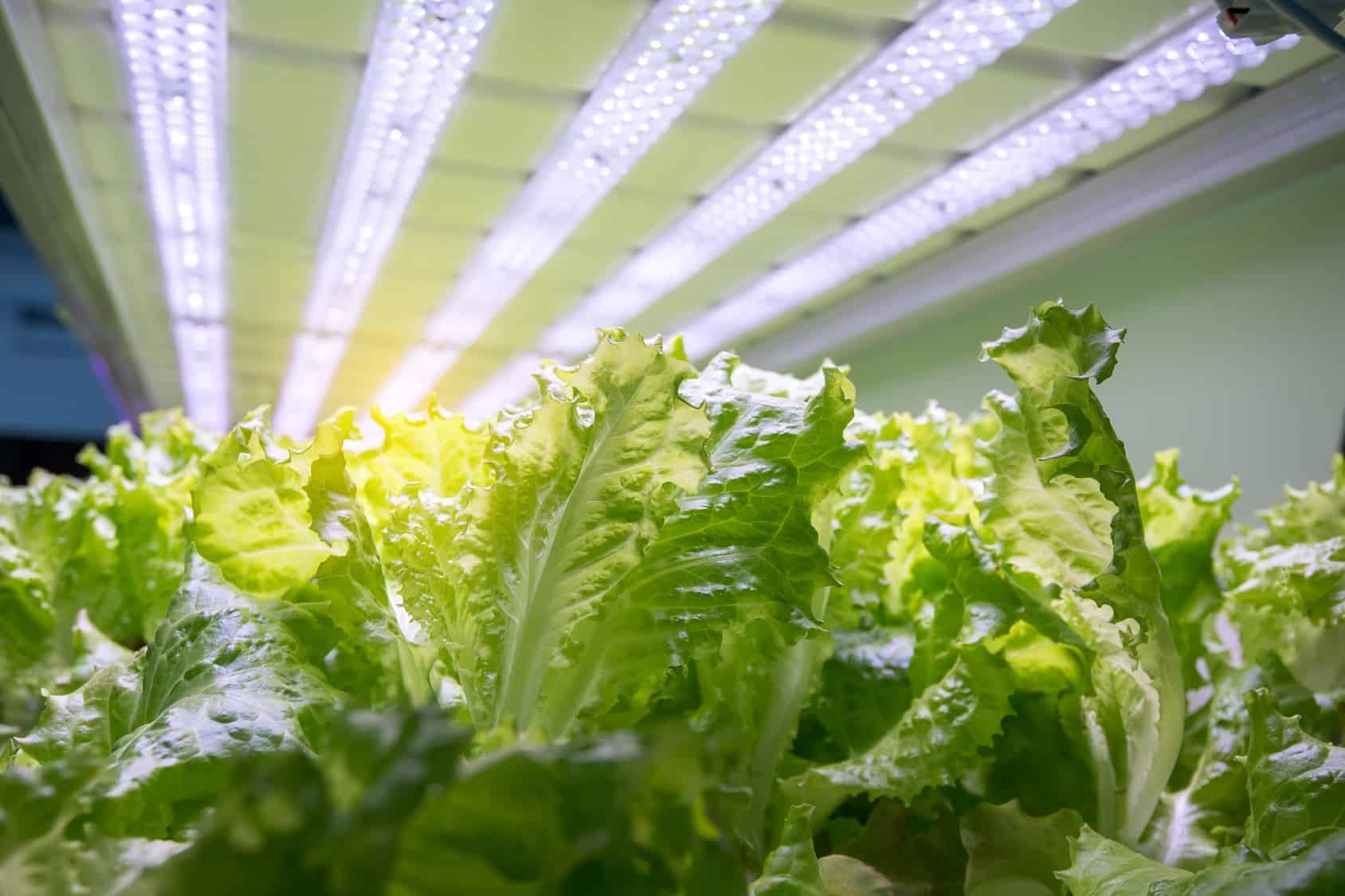
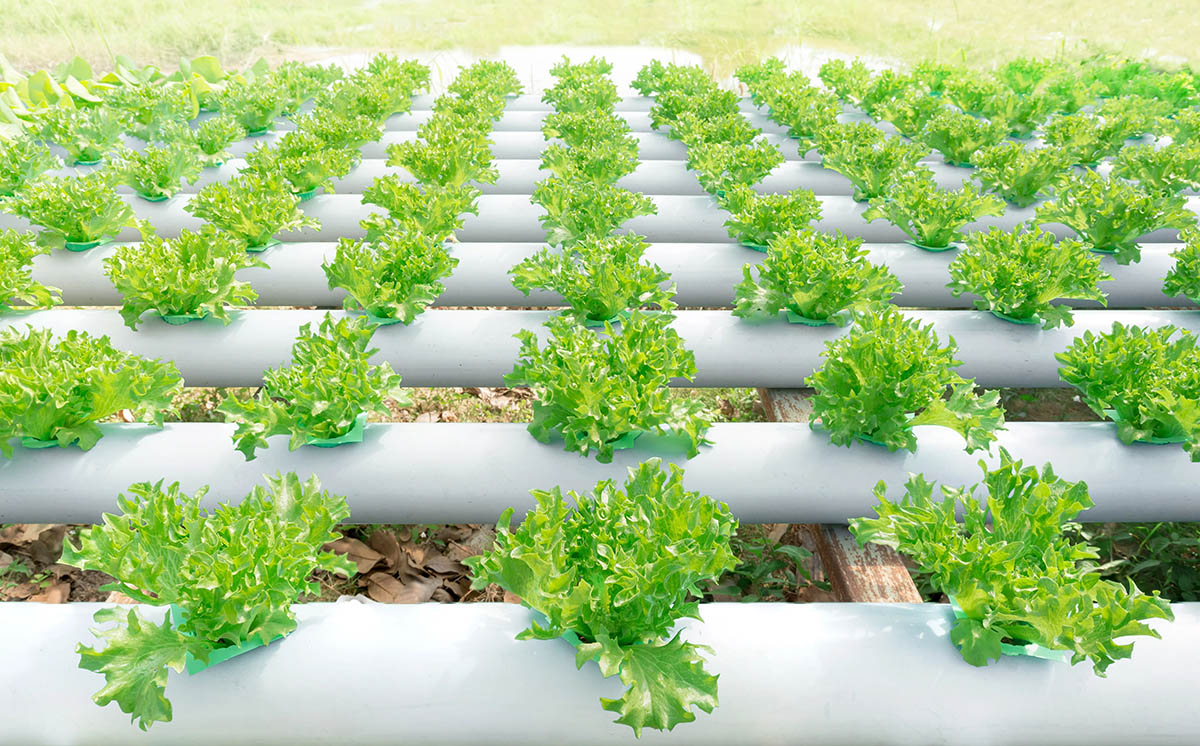
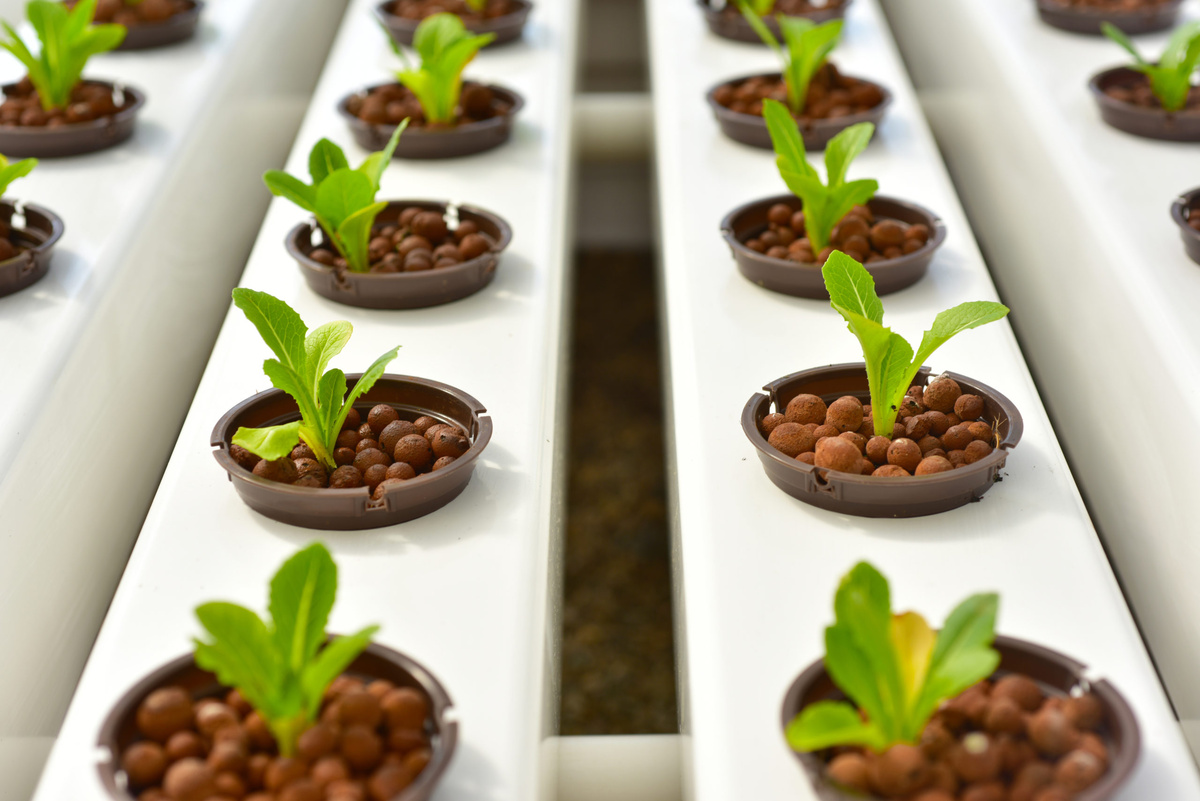
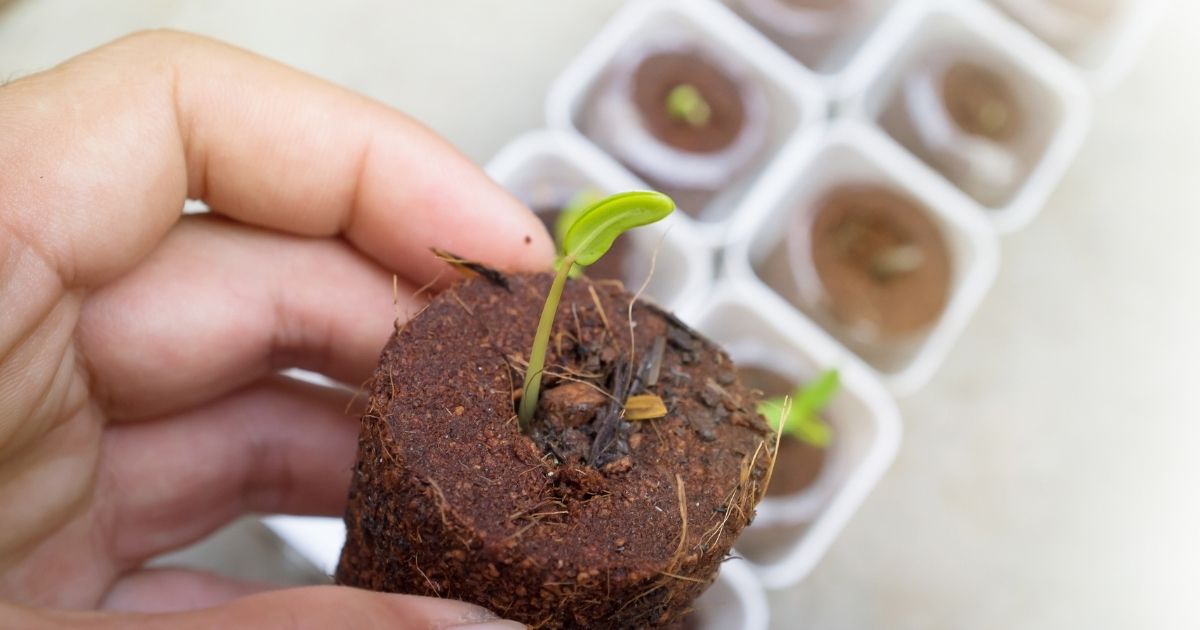
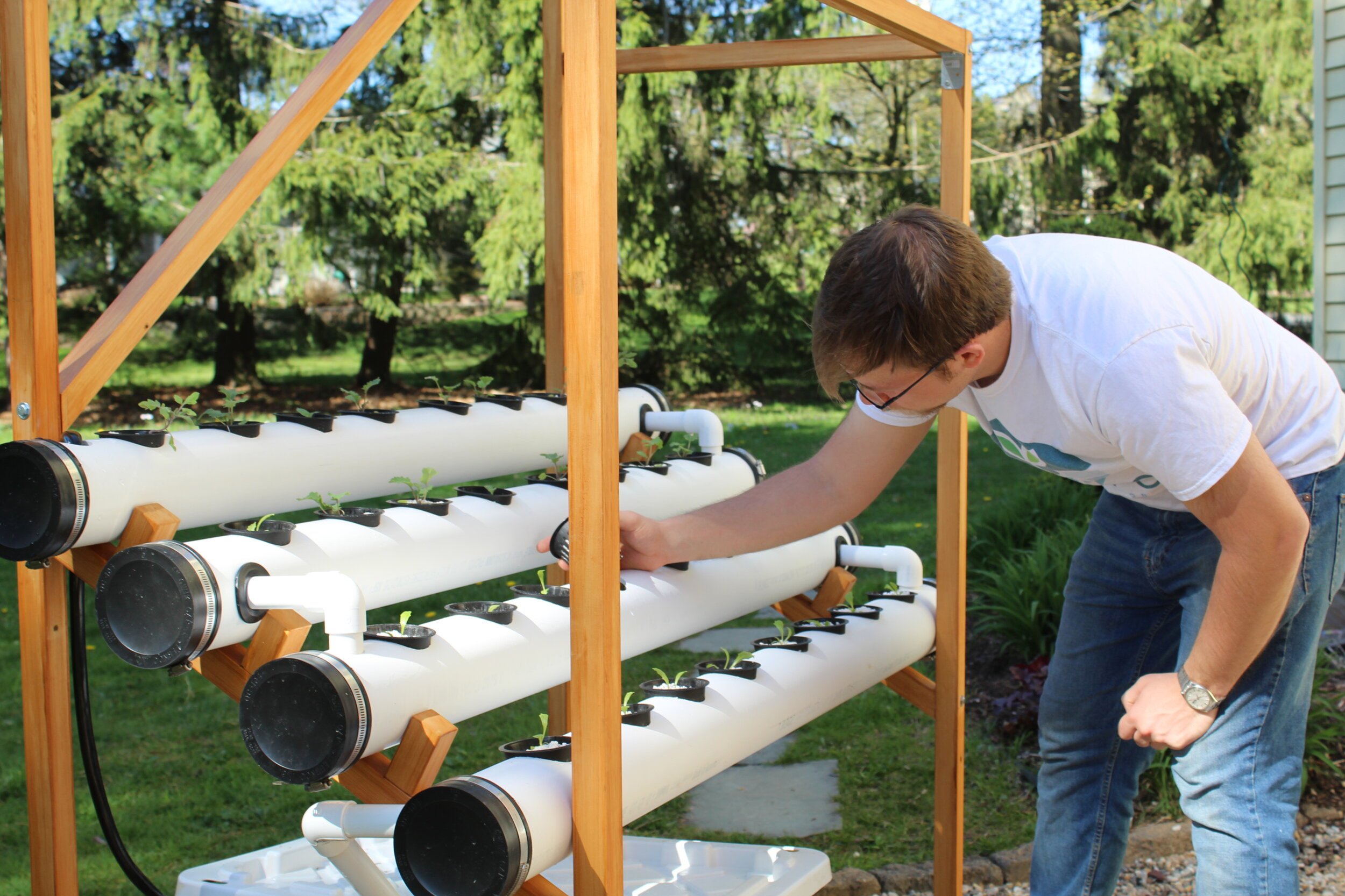
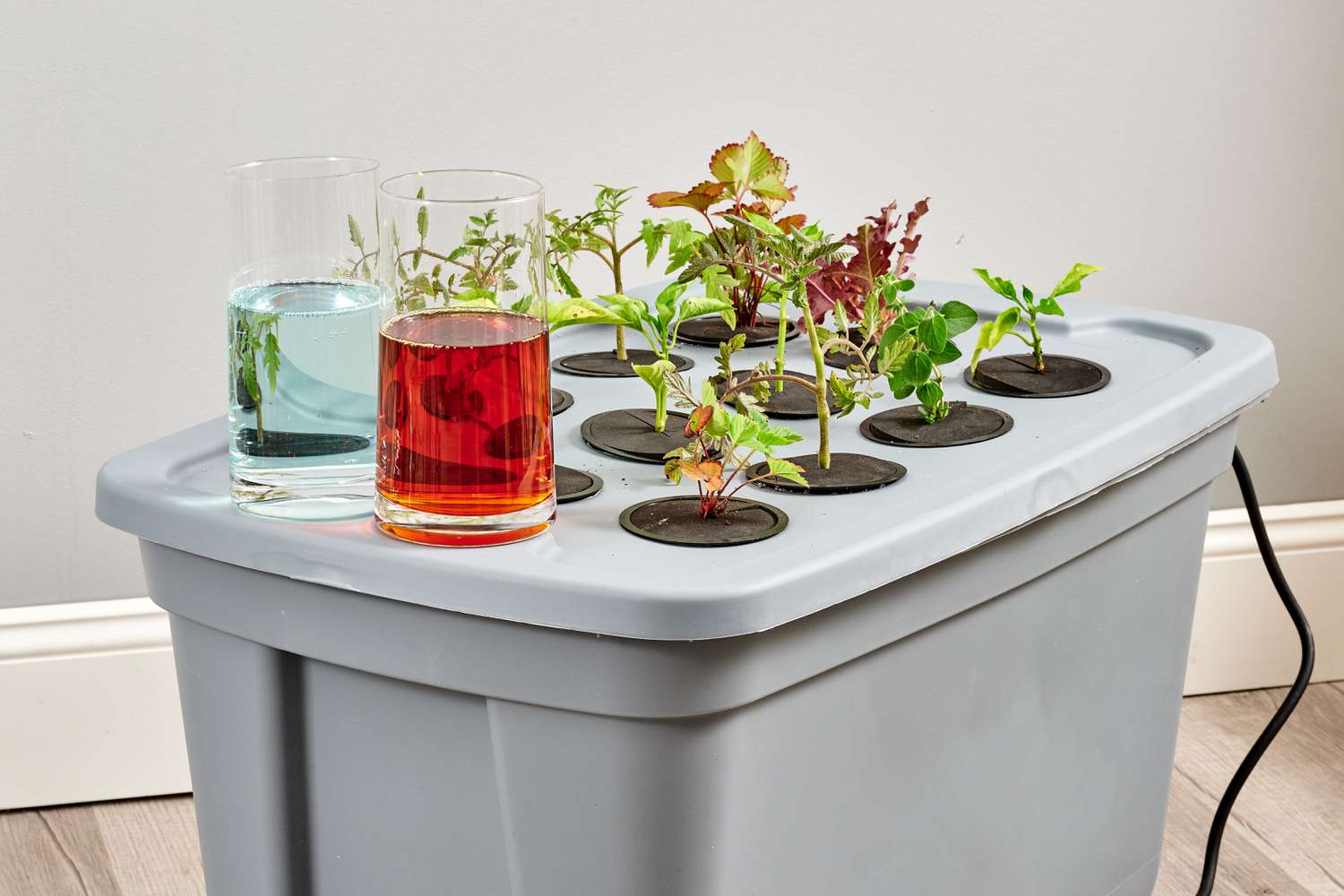



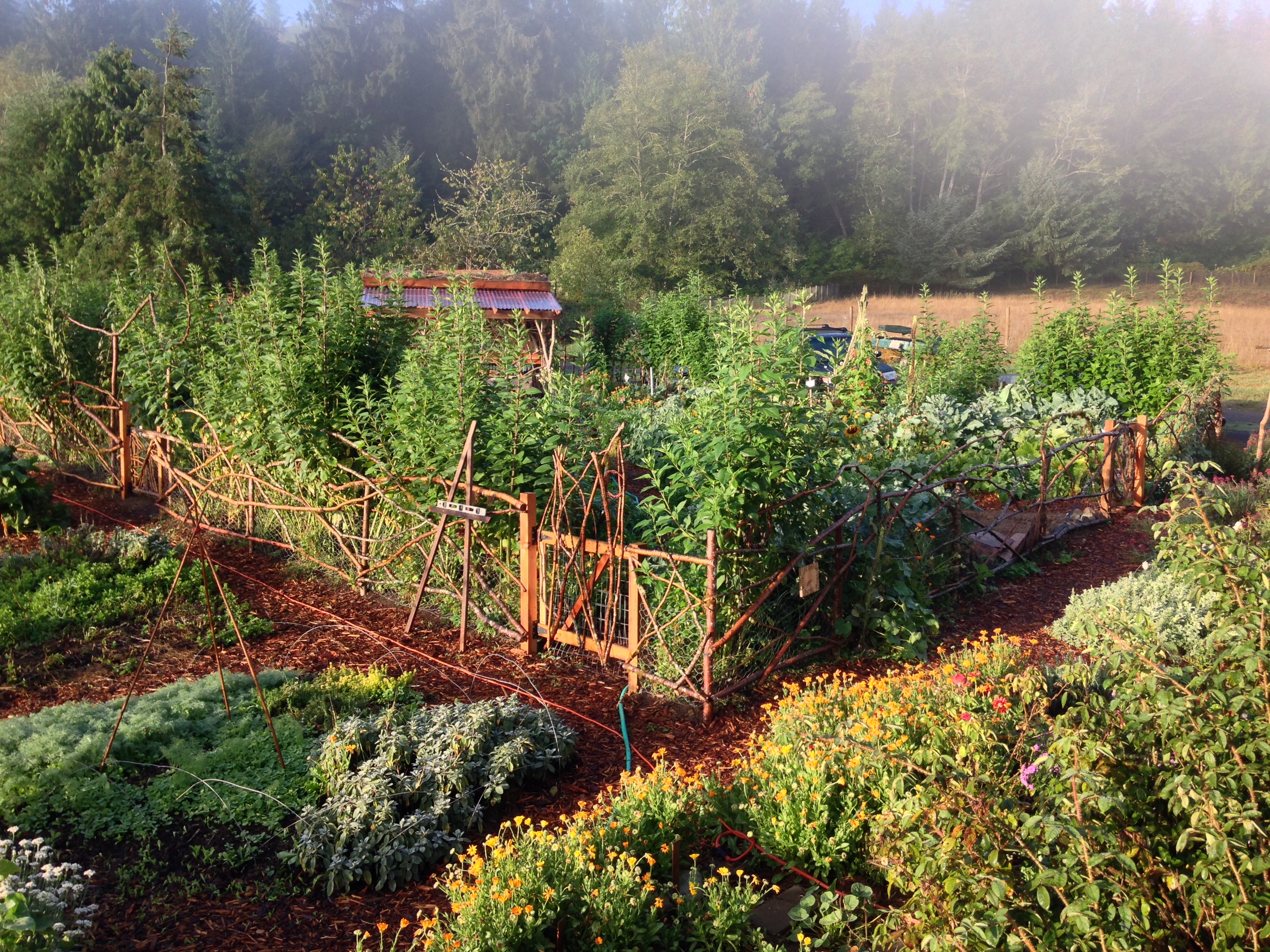

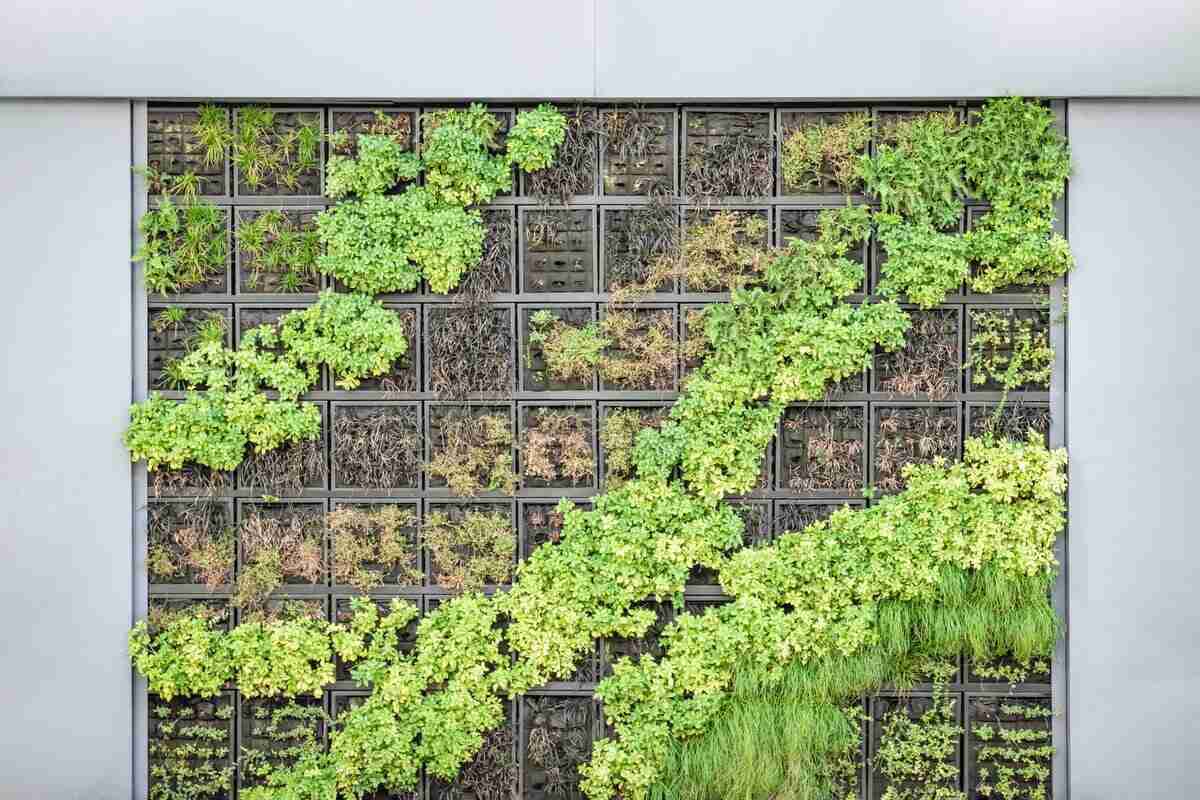
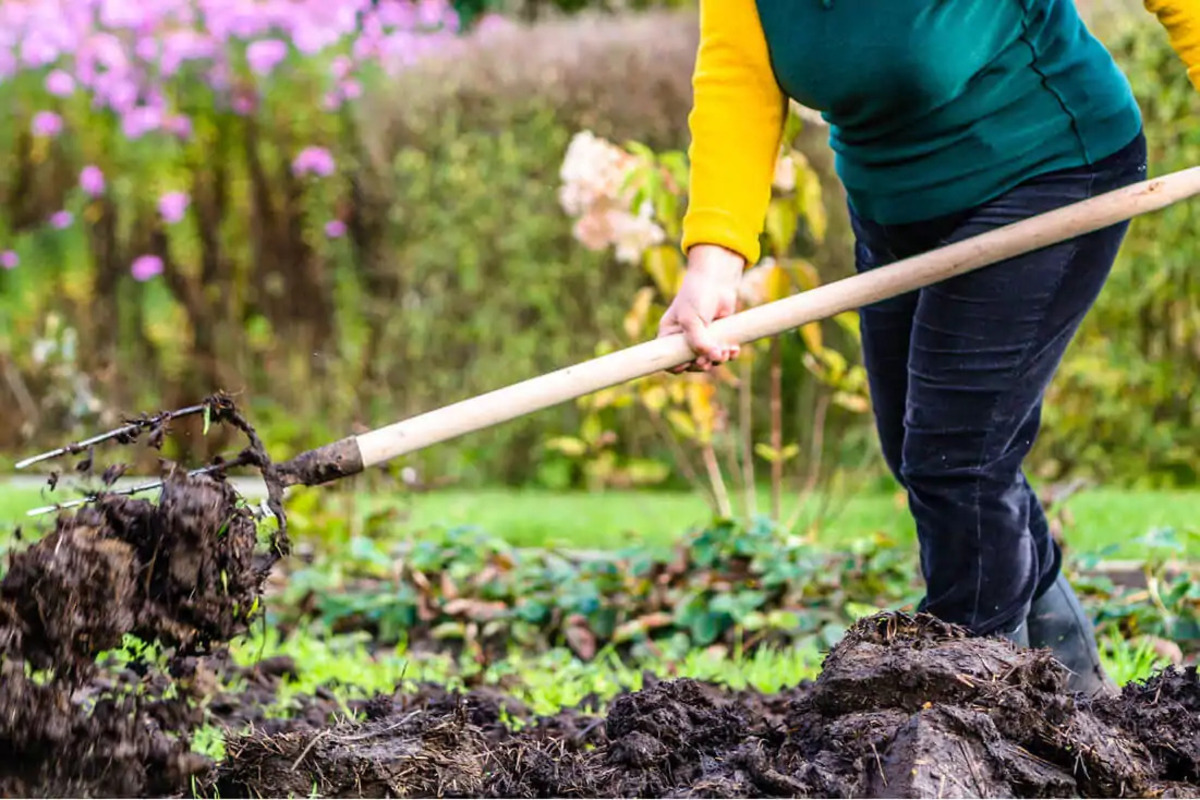

0 thoughts on “What Is A Hydroponic Garden”